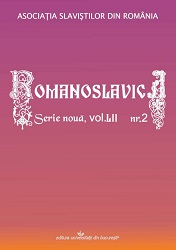Nasljedni jezik i identitet
Hereditary language and identity
Author(s): Martina PodbojSubject(s): Foreign languages learning, Theoretical Linguistics, Applied Linguistics, South Slavic Languages, Structuralism and Post-Structuralism, Identity of Collectives, Pedagogy
Published by: Editura Universităţii din Bucureşti
Keywords: identity; heritage language; identity construction; Croatian as a heritage language;
Summary/Abstract: For the past two decades, identity has been recognised as one of the key constructs in applied linguistics, and has taken a central role in different second language learning contexts (Block 2007). Following the poststructuralist paradigm, in contrast to essentialist and structuralist perspectives, identity is seen as a dynamic process, constructed discursively in language use (De Fina et al. 2006). Since identity and language are inseparable (Tabouret-Keller 2000), studying speakers’ identity in second language learning is of great significance, especially in the case of heritage language. Not only does knowing another language change the speakers’ view of the world (Burck 2008), in case of heritage language it also has a specific influence on constructing individual and group identity/ies. In this paper I will discuss the relationship between language competence and identity construction of heritage learners and speakers of Croatian. Heritage language learners differ greatly from other language learners in terms of their language needs and motivation (Cvikić et al. 2010). Hence studying the fragmented, complex, and dynamic quality of identity is crucial for understanding the process of language learning and identity construction of heritage language learners, as well as understanding the fluidity of personal and group identity/ies, positioning, and belonging.
Journal: Romanoslavica
- Issue Year: LII/2016
- Issue No: 2
- Page Range: 205-215
- Page Count: 11
- Language: Croatian

